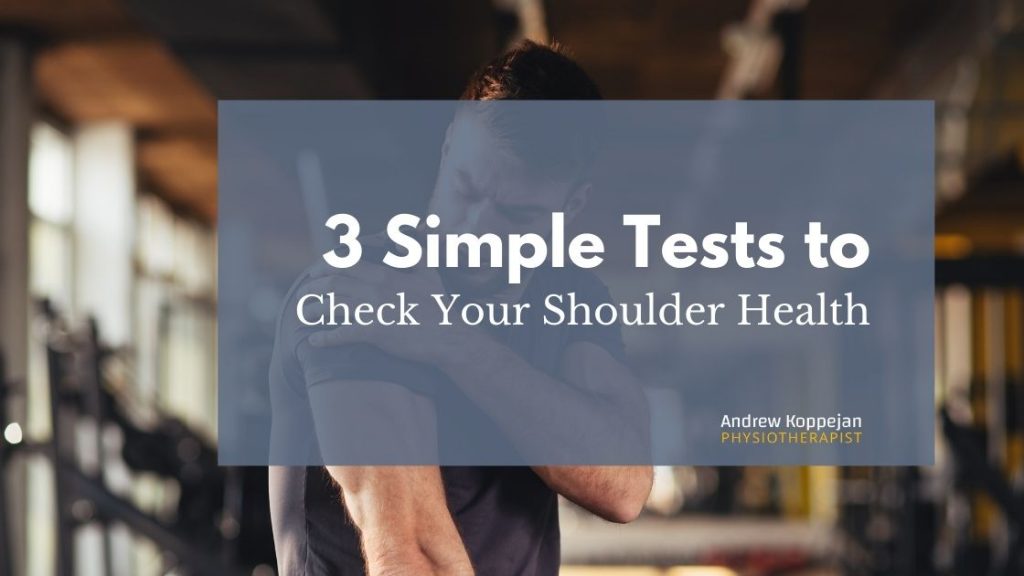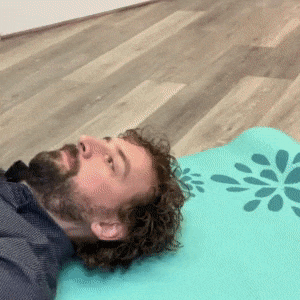Shoulder pain can often just show up one day.
Everything seemed ok.
And then you wake up one morning and you have some shoulder pain and/or stiffness.
And you have no idea why.
The shoulders (and the whole body in fact!) is a remarkable group of joints. It’s so remarkable in fact that you can keep going with small strains and imbalances that we don’t even notice that something may seem off.
Our shoulders are the most movable joint in the body. And with so much movement, there’s ample opportunity for inefficiencies and small problems to develop.
And over time, those small problems can get bigger.
To the point you can’t ignore them any more.
Luckily, there are ways to keep a check on your shoulder health before problems develop.
You can try these 3 simple tests at home and without any equipment to assess your shoulder health.
Shoulders Overhead Test
This exercise can reveal restriction in the shoulder blade or joint itself, leading to imbalances in your range of motion. If one shoulder blade rises off the floor more, or one arm seems to reach further more easily, this is a clue that there are uneven restrictions in one or both of the shoulders.
Here’s how to do it:
- Lie flat on the ground or a firm surface with your thumbs resting on the floor beside you.
- Now bring the hands and arms up and back behind you as far as possible.
- While doing this, maintain a flat back without arching off the floor.
Windshield Wiper Test
The “windshield wiper test” is a great way to evaluate your shoulder joint’s rotation range of motion.
Here’s how to do it:
- Lie on your back and position your arm away from the body with your elbow and shoulder bent at 90 degrees, with the hand pointing up towards the ceiling.
- First, rotate the arm as far back as possible, then as far down as possible, mimicking a windshield wiper.
Most people should experience some restriction of motion going down, but a healthy range is for a movement of about 70 degrees.
A good idea is to place the opposite hand on the shoulder to feel if it’s lifting off the ground as you rotate forwards.
Hand Behind BackTest
The last test can be done standing and is achieved by simply placing the hand behind the back without letting the shoulder roll forward. This assesses your internal rotation of the joint.
Here’s how to do it:
- Reach fully to the mid-back and then place the opposite hand on the shoulder to feel for any pulling forward.
- Then try the same on the other side – the key is that both sides should be equal.
An Ounce of Prevention is Worth How Much?
These three tests are simple enough to do at home.
They can reveal tiny imbalances and tensions that can develop into problems later on. If you’ve discovered some unevenness in your shoulders, checking in with a physiotherapist can help you rectify the imbalance.
Very often, more serious injuries can be traced back to minor imbalances that were lurking in the background, unnoticed.
Even if you aren’t experiencing any pain, a quick assessment with a physiotherapist can put your mind at ease.






